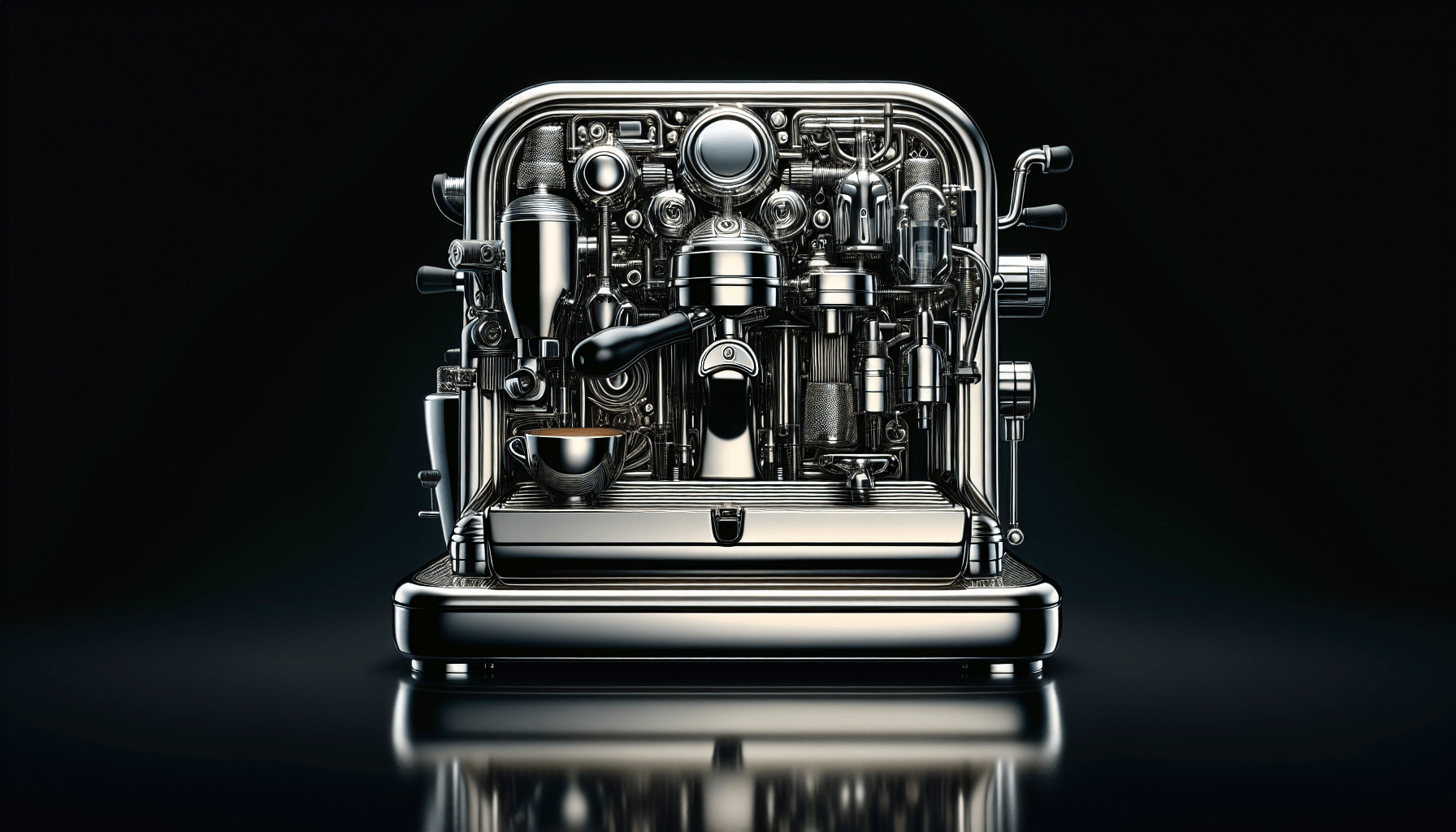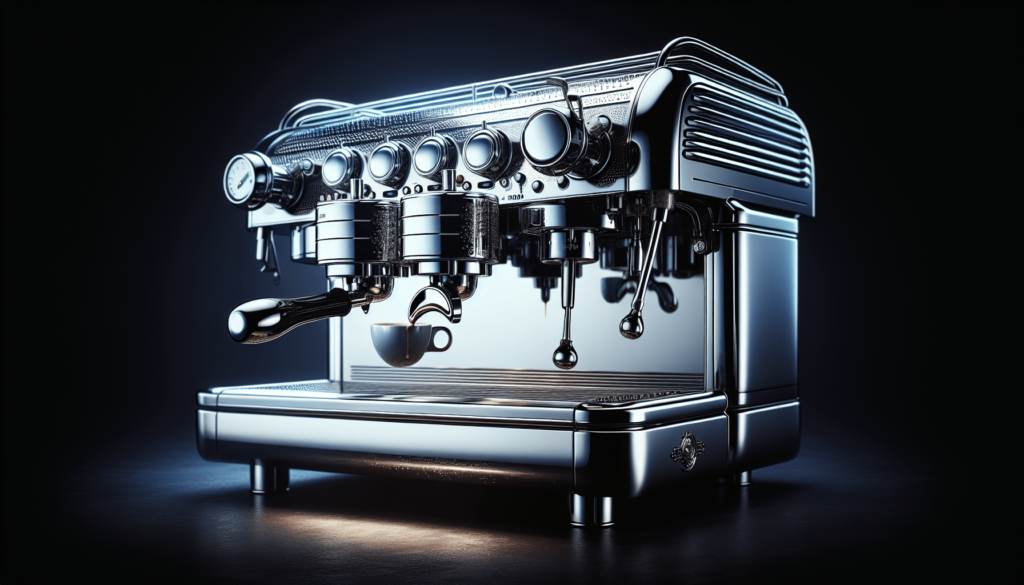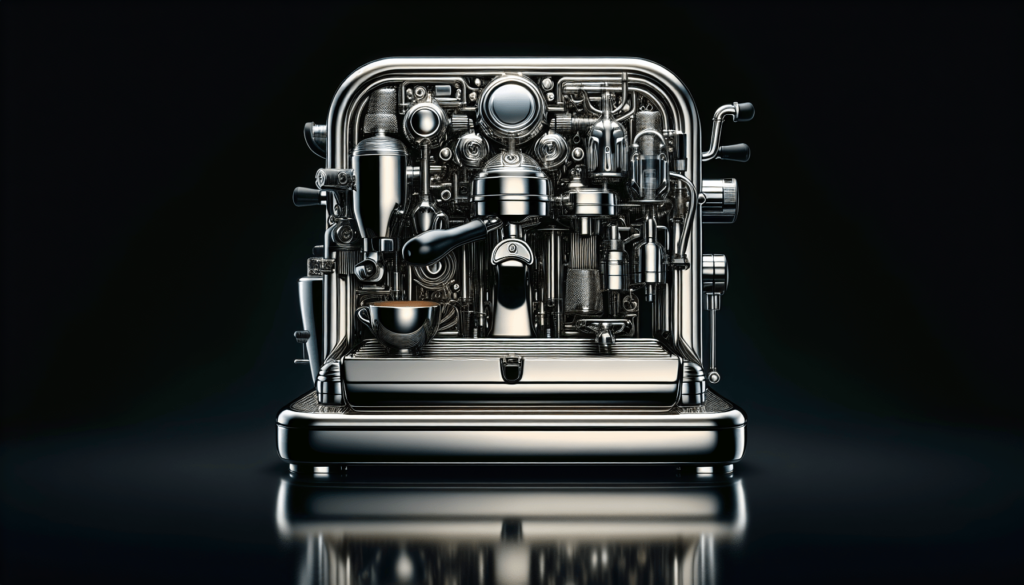
Attention all coffee lovers! Are you struggling to choose between a semi-automatic and a fully automatic stainless steel espresso machine? Look no further, because we’re here to settle the debate for you. In this article, we will explore the pros and cons of each type of machine, providing you with all the information you need to make an informed decision. So grab your favorite mug, sit back, and get ready to embark on a caffeinated journey as we navigate through the world of espresso machines. Let’s brew up some knowledge!

Functionality
Definition of semi-automatic and fully automatic machines
Semi-automatic and fully automatic espresso machines are both designed to make espresso, but they differ in their functionality. A semi-automatic machine requires some manual operation from the user, such as grinding and tamping the coffee grounds, adjusting the water temperature, and controlling the extraction time. On the other hand, a fully automatic machine handles these tasks automatically, allowing you to simply push a button and let the machine do the work.
Differences in functionality between semi-automatic and fully automatic machines
The key difference in functionality between semi-automatic and fully automatic machines lies in the level of control they offer to the user. With a semi-automatic machine, you have the ability to customize various factors that can affect the flavor and strength of your espresso. You can experiment with different grind sizes, water temperatures, and extraction times to achieve your desired taste. On the other hand, a fully automatic machine takes care of these variables for you, relying on pre-programmed settings to deliver consistent results every time.
Control
Level of control offered by semi-automatic machines
semi-automatic machines provide a high level of control to the user. You can adjust the grind size to control the extraction rate and vary the taste of your espresso. You can also control the water temperature and extraction time, allowing you to experiment and fine-tune your brewing process to suit your preference.
Level of control offered by fully automatic machines
In contrast, fully automatic machines offer less control over the brewing process. They are designed to streamline the experience and provide consistency in the end results. While you can still make minor adjustments, such as changing the coffee strength or cup size, the major variables like grind size and extraction time are predetermined by the machine’s programming. This makes fully automatic machines a convenient option for those who prefer a hassle-free and consistent brewing experience.
Ease of Use
Difficulty level of operating a semi-automatic machine
Operating a semi-automatic machine requires some barista skills and knowledge of espresso making. You need to understand the concepts of grinding, tamping, and controlling extraction to achieve optimal results. This level of involvement may appeal to coffee enthusiasts who enjoy the process of crafting their espresso and are willing to invest time in learning and practicing.
Ease of use offered by fully automatic machines
Fully automatic machines are designed to be user-friendly and require minimal effort on your part. With just a press of a button, the machine will grind the beans, tamp, extract, and even froth milk if desired. This makes fully automatic machines a great option for those who want a quick and convenient way to enjoy their espresso without any complicated steps in the process.

Consistency
Consistency in espresso quality achieved by semi-automatic machines
Semi-automatic machines offer the opportunity to fine-tune the brewing variables, leading to the potential for inconsistency in the resulting espresso. The quality of the espresso can vary depending on the skill and experience of the user, as well as the consistency in the grind size, tamping pressure, and extraction time. While this can be seen as a drawback, it also allows room for experimentation and personalization.
Consistency in espresso quality achieved by fully automatic machines
Fully automatic machines excel in delivering consistent espresso quality with every brew. Because the machine controls the variables, such as grind size and extraction time, the resulting espresso is predictable and reliable. This is especially advantageous for businesses or individuals who value consistency and want a hassle-free way to produce consistent espresso without the need for extensive training.
Customization
Ability to customize drinks with semi-automatic machines
Semi-automatic machines offer a high level of customization when it comes to crafting your espresso-based drinks. You can adjust the grind size, water temperature, and extraction time to create a drink that suits your individual taste preferences. This flexibility allows you to experiment with different profiles, explore new flavors, and create unique combinations to satisfy your coffee cravings.
Customization options available with fully automatic machines
While fully automatic machines may not offer the same level of customization as their semi-automatic counterparts, they still provide options for customization. Most machines allow you to adjust the coffee strength and choose between different drink sizes. Some models even offer additional features like milk frothing and temperature control, giving you the ability to create a wide variety of drinks, including cappuccinos, lattes, and macchiatos.
Price Range
Price range of semi-automatic espresso machines
Semi-automatic machines generally fall into a wide price range. Entry-level models can be relatively affordable, starting from around $100 to $300. However, as you move up to higher-end models with additional features and advanced technology, the price can range from $500 to $2000 or more. The cost of the machine often depends on factors such as build quality, brand reputation, and the inclusion of extra features like built-in grinders or PID controllers.
Price range of fully automatic espresso machines
Fully automatic machines tend to be more expensive than their semi-automatic counterparts. Entry-level fully automatic machines usually start around $500 and can go up to $2000 or more for high-end models. The higher price is justified by the convenience and automation offered by these machines, as well as the advanced technology and build quality. It’s important to consider your budget and the features that are important to you when deciding which type of machine to invest in.
Maintenance
Maintenance requirements for semi-automatic machines
Semi-automatic machines generally require regular cleaning and maintenance to keep them in optimal condition. This includes daily cleaning of the portafilter, group head, and steam wand, as well as periodic descaling and backflushing. Additionally, you will need to ensure that the grinder is properly calibrated and maintained to achieve consistent results. While the maintenance routine may require some effort, it also allows you to control the cleanliness and longevity of your machine.
Maintenance requirements for fully automatic machines
Fully automatic machines often have built-in cleaning and maintenance features that make the upkeep much simpler. Many machines have self-cleaning cycles that rinse and descale the internal components, reducing the need for manual intervention. Additionally, some models have removable brewing units and dishwasher-safe parts, making cleaning a breeze. However, it’s still important to follow the manufacturer’s guidelines and perform regular maintenance tasks to ensure the longevity of the machine.
Barista Skills
Skills required to operate a semi-automatic machine
Operating a semi-automatic machine effectively requires some level of barista skills. You will need to have a good understanding of the espresso-making process, including grinding, tamping, and extraction. Additionally, you will need to know how to steam milk properly if you want to create milk-based beverages. These skills can be acquired through practice and experimentation, and they allow you to have full control over the brewing process and the ability to craft your espresso to perfection.
Skills needed to operate a fully automatic machine
Fully automatic machines minimize the need for barista skills, as they handle most of the brewing process automatically. However, some basic knowledge of coffee and the machine’s features is still necessary to ensure optimal results. Understanding coffee extraction and the different drink options available, as well as being familiar with the machine’s programming and user interface, will help you navigate the customization settings and make the most of your fully automatic machine.
Speed
Brewing time for semi-automatic machines
The brewing time for semi-automatic machines can vary depending on the user’s technique and the specific machine’s design. On average, it takes around 25 to 30 seconds for the espresso to be extracted. However, this time can be longer if you prefer a slower extraction for a stronger flavor or shorter if you prefer a milder taste. Additionally, the overall time can be affected by the time it takes to grind and tamp the coffee, as well as preheating the machine.
Speed of brewing with fully automatic machines
Fully automatic machines are designed for speed and efficiency. With the touch of a button, the machine can grind the coffee, tamp, extract, and dispense the espresso within seconds. This makes fully automatic machines ideal for situations where speed is a priority, such as in busy coffee shops or offices where multiple drinks are prepared simultaneously. If convenience and quick turnaround time are important to you, a fully automatic machine may be the way to go.
Final Verdict
Factors to consider when choosing between semi-automatic and fully automatic machines
When deciding between a semi-automatic and fully automatic espresso machine, there are several factors to consider. First, consider your level of involvement and the amount of control you desire over the brewing process. If you enjoy experimenting and customizing your drinks, a semi-automatic machine may be the right choice. On the other hand, if convenience and consistency are more important to you, a fully automatic machine would be a better fit.
Secondly, think about your budget and the features that are essential to you. Semi-automatic machines generally offer more options for customization but come at a lower price point. Fully automatic machines, while more expensive, provide a hassle-free experience with reliable results.
Lastly, consider your skill level and the amount of time you are willing to invest in learning and operating the machine. If you enjoy the art of brewing espresso and want to acquire barista skills, a semi-automatic machine will allow you to grow and experiment. If you prefer simplicity and want a machine that does the work for you, a fully automatic machine will provide the ease of use you desire.
Ultimately, the choice between a semi-automatic and fully automatic machine comes down to personal preferences and individual needs. Both options offer unique advantages and can provide an enjoyable espresso experience. Whether you value control, customization, convenience, or consistency, there is a stainless steel espresso machine out there that will meet your specific requirements and elevate your coffee routine.